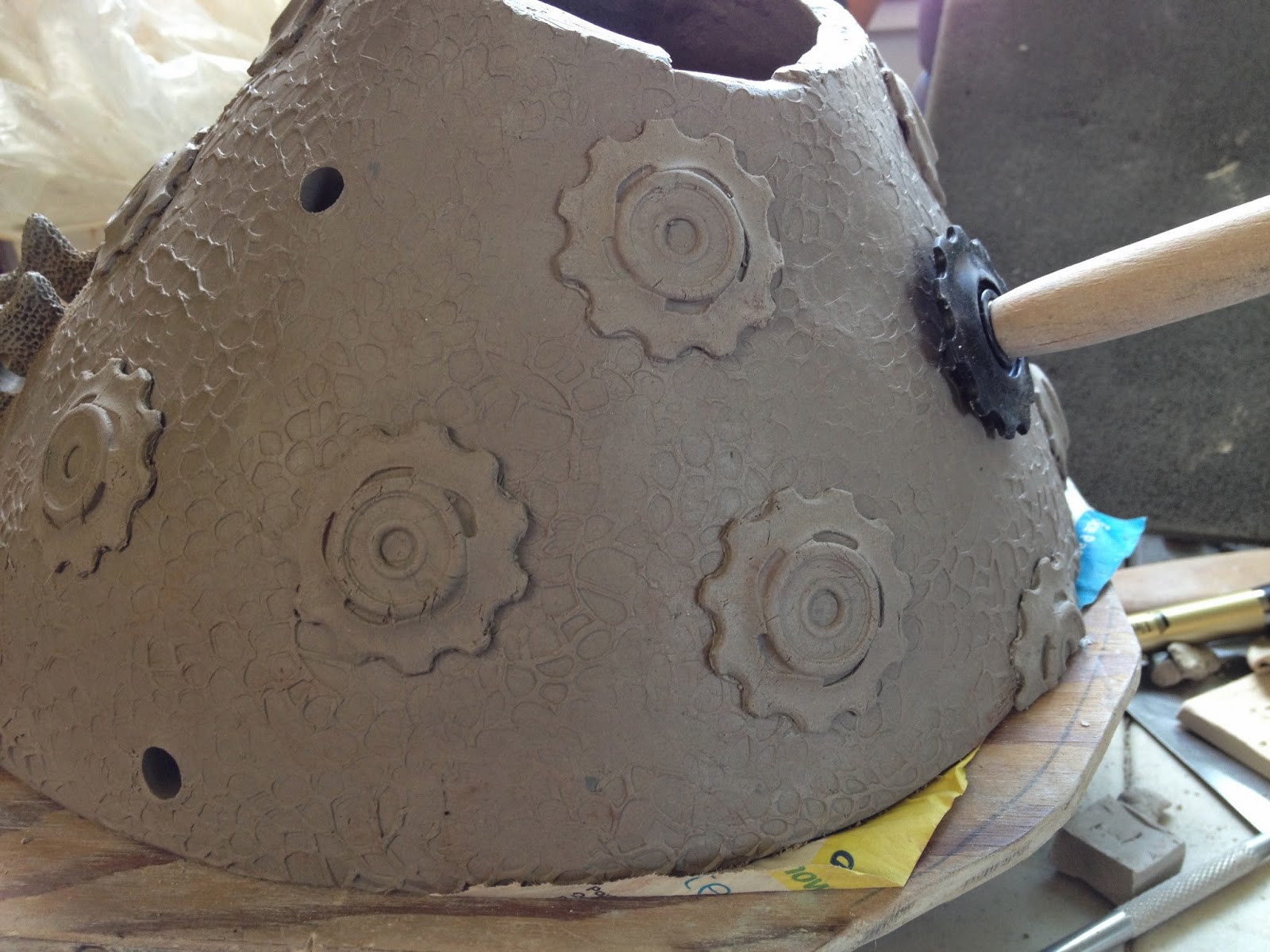One fault with the spinning bike wheel piece was that it was top-heavy. I filled the base with cement and the problem disappeared, but I've been wondering if I could balance the wheel weight with a wide base. I started coil-building a wide base, but as I built, I realized I didn't want a straight, level top.
The top of the new base, before and after I cut it at a slant for a gear.
I leaned the form over at the top and bisected the top section from the base with an angled gear. The top section is highly textured with small jewel-like sprigs. The lower section has an impressed texture with sprigged decoration.
Attachment for one branch-like "stem" on the sculpture base, set in place (left) and lifted out of star shapes (right).
Thinking about using the bike parts as supports, I designed two branch- or stem-like pieces connected with bike parts. Both pieces are leftover from the SRAM Part Project from 2012. Both insert shallowly into the wall of the base. The irregularly shaped one (top) will have a bolt securing it to the ceramic braces on either side. The star shapes lock the bike part into a vertical position because the metal form has sections that rest inside the notches.
 |
| A second attachment for a branch-like "stem" on the other side of the sculpture base. In the picture a paintbrush is showing the location of the eventual bolt or rod. |
Both "stems" will be removable for easier transportation of the sculpture. The second arm will be secured with an invisible bolt or rod inside the sculpture. The plastic bike piece will rest inside a cut-out in the wall of the sculpture.
Last year I created some sprigs from a round plastic gear piece that is part of the rear derailleur (I had to look that up) on the back wheel of the bike. I decided to use the actual gears as well as the gear sprigs as surface decoration on the sculpture base.
Placing the actual gear helped me arrange the sprigged gears.
The holes represent the placement of the plastic pieces. I only had one piece cleaned and ready to attach while I was building the base, so I held it in place with a hole cutter punch while I placed the clay gears.
 |
| The base is almost done (building). |
After firing and glazing, I plan to increase the height (and weight) of the base by attaching a series of coils of bike chain underneath the bottom rim of the sculpture. Revolution Cycles (go buy all your bike stuff there, please) in Yakima is still saving me bike parts, the latest box was filled with chains.





















































